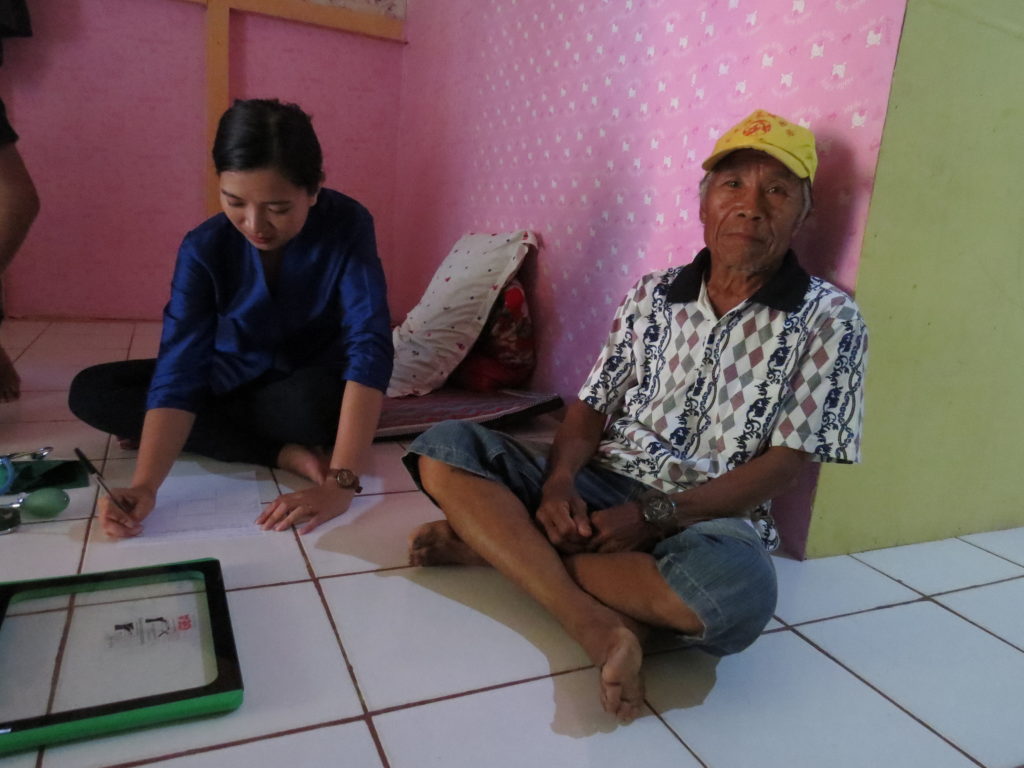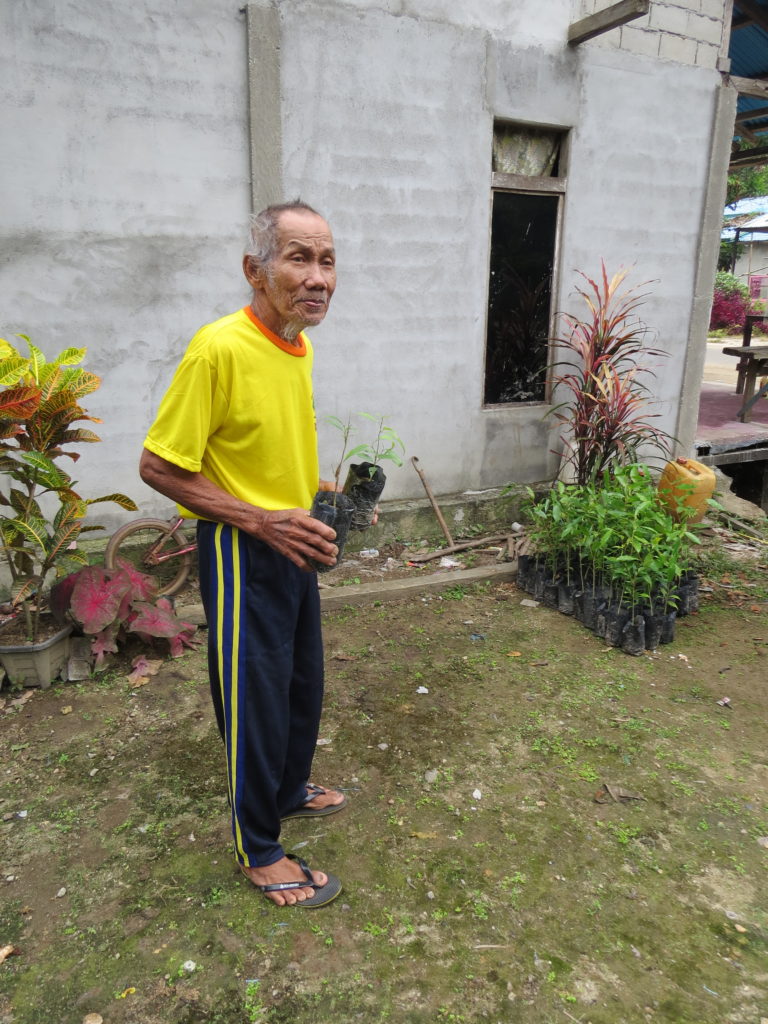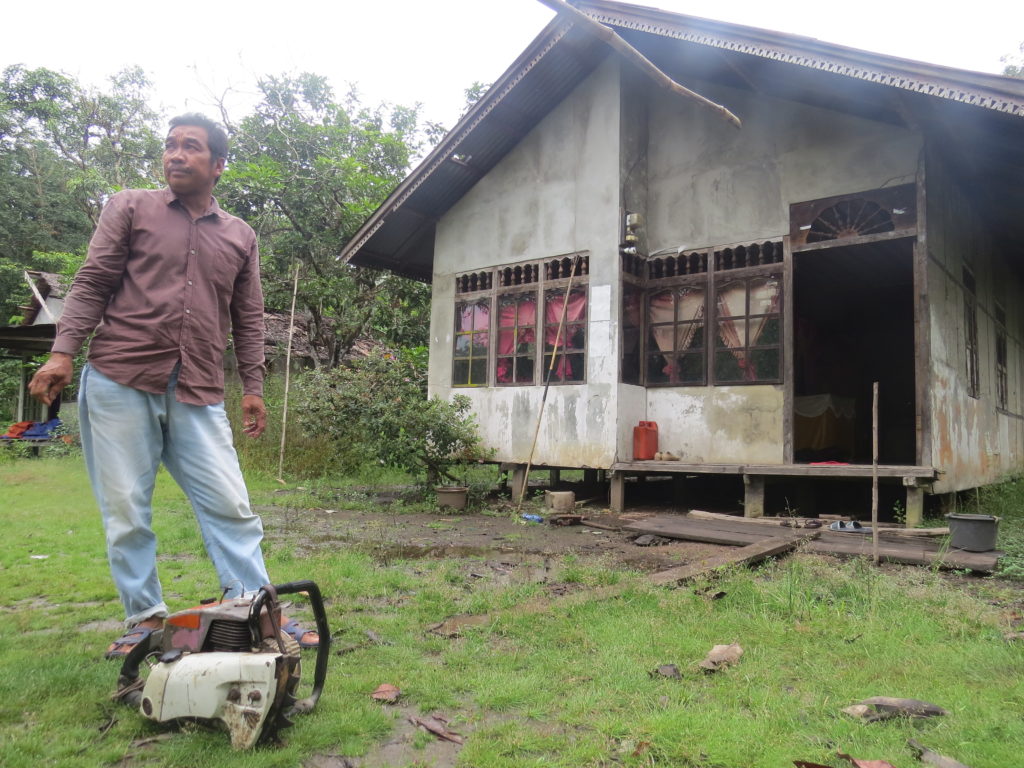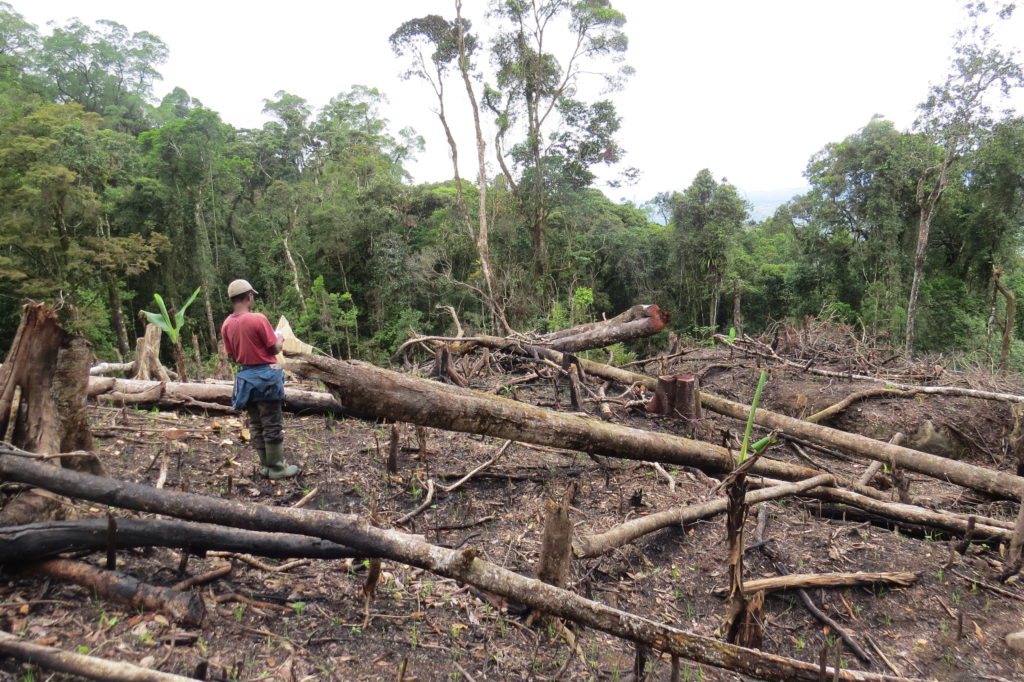Walk through the lowland rainforest of Gunung Palung National Park on the western coast of Borneo, and feel steam rising around you. Fungi compost the leaf litter, and termites digest fallen logs into soil. Millennium-old ironwoods and meranti trees brace themselves against thundering rain with buttress roots. Between storms, sunlight bakes the canopy and filters down to dapple the forest floor.

Photography by Nina Finley
Health In Harmony
In the 1980s and 1990s, Borneo experienced some of the fastest deforestation in history. Not even areas with legal protection were safe.
When an undergraduate student named Kinari Webb visited Gunung Palung National Park as an orangutan research assistant in 1993, she heard the sounds of chainsaws every day. Webb took the unusual step of asking loggers why they cut trees, and their response surprised her: they logged to afford healthcare.
Healthcare, Webb learned, is one of those things a person will do nearly anything to access. What wouldn’t you do to secure life-saving care for yourself or your family? Webb spoke with one man who had cut 60 old-growth trees to pay for his wife’s Caesarean section. Another man had logged to afford his daughter’s scabies treatment.

Then Webb took an even more radical step. She swapped her PhD plans for medical school and became a board-certified family doctor and in 2007, she founded the non-profit Health In Harmony providing healthcare to the communities around Gunung Palung in exchange for their commitment to protect the park.
The organisation designs its programmes through “radical listening,” a method of consensus-based discussions asking community members to identify the drivers of deforestation and the resources they would need to be able to protect their ecosystems.
In its first year, Health In Harmony spent over 400 hours asking community members, “What would you need as a thank you from the global community for protecting the rainforest?”
The communities had a clear response: they asked for affordable, high-quality healthcare and training in organic farming as an alternative livelihood to logging.
In response, Health In Harmony and its Indonesian partner, Alam Sehat Lestari, opened a health clinic and began classes in organic farming. The clinic accepts non-cash payments for medical bills, such as seedlings used for reforestation and manure for the model farm. It offers tiered discounts to communities that reduce logging. Organic farming training and environmental education have reached thousands of people, and the “chainsaw buyback” program supports former loggers to start small businesses with no-interest loans.

It’s working. Health In Harmony surveys show an 88 percent decrease in the number of logging households around Gunung Palung National Park and a 67 percent decrease in infant mortality since programmes began in 2007. In the same time period, satellite imagery shows 21,000 hectares of secondary forest growing back in the park.
By protecting the rainforest of Gunung Palung, Health In Harmony’s programme are keeping 79 million tons of carbon sequestered – equal to 14 years of carbon emissions from San Francisco.
Planetary health
Webb describes the organisation’s model as “planetary health,” a term coined four years ago by the Lancet medical journal and Rockefeller Foundation. Simply put, planetary health means the well-being of the environment and that of humans are deeply entangled.
“If they aren’t both healthy, neither can be healthy,” summarised Webb.
Climate change makes this entanglement clear. Forest loss emitsmore carbon dioxide – 18 percent of the global total – than the transportation sector, which accountsfor 14 percent.
And it may come as a surprise that the majority of carbon emissions from forests are not due to clear-cutting for crops like oil palms and soybeans. This kind of large-scale destruction is a huge problem, and it looks devastating in aerial photographs, but it contributes only about one third of the carbon emissions from forest loss.
A 2017 study published in Science found that 69 percent of carbon losses from tropical forests are due to forest degradation— activities that damage a forest but leave it standing — while only 31 percent are from clear-cutting.
Webb called the results “stunning.”
“That 69% of the carbon loss comes from degradation makes sense to me though from my experience on the ground. Individuals logging — often just to get their very basic needs met — can take out most of the large trees in a forest. This is not insignificant, it is massive. Both for the health of the planet and for biodiversity,” Webb wrote in an email.
The Sciences tudy showed that actions of individuals, such as logging hardwoods with a chainsaw or cultivating a rice field in a national park, have enormous consequences for the global atmosphere. This is a challenge, because solutions will need to work individually with every community near a forest. It’s also an opportunity for climate mitigation that we can’t turn down.

We have ten years to draw down carbon
In October 2018, the United Nations warned that if we don’t start drawing down carbon by 2030, we may reach irreversible tipping points.
Earth’s average temperature has warmed by a little above1 degree Celsius so far. Communities are already feeling record heat-waves, rising sea levels and melting permafrost. If the planet surpasses 1.5 degree Celsius of warming, the United Nations predicts the extinction of coral reefs and ice-free Arctic summers, plus more extreme weather, droughts and floods.
It’s no longer enough to reduce carbon emissions. To reach the target, we need to start drawing down carbon dioxide, actively pulling it out of the atmosphere and locking it back up as a solid.
Carbon sequestration technology is so complex and expensive that it barely exists. Luckily, we don’t need to engineer it. Plants have perfected the technique over millions of years of evolution. As trees soak up sunlight and water, and tentatively probe their roots into the soil, their leaves breathe in greedy gulps of carbon dioxide and store it in their woody bodies.
Every scenario the United Nations proposed to keep the earth below the 1.5-degree target relies on reforestation. The World Resources Institute estimates that tropical forests alone represent 23 percent of the carbon drawdown solution we need before 2030 to avoid disaster.
Protecting the ironwoods and meranti trees of Gunung Palung National Park won’t reverse climate change on its own. But Health In Harmony’s success suggests an opportunity to prevent the loss of tropical forests well beyond Indonesia. Health In Harmony just opened its second site, on the border of Bukit Baka Bukit Raya National Park in central Borneo, and it’s not stopping there.
“This isn’t just in two places. This is actually everywhere,” explained Webb. “We did radical listening in communities in the Philippines, all the way across Indonesia in different ecosystems, we did it in Madagascar, and we’ve heard lots of stories about Brazil. The story’s the same. People are having to choose between their future and their present. And we don’t want that to ever have to happen.”

Health In Harmony plans to open replication sites in Madagascar and Brazil soon, and it hopes the planetary health model will catch on everywhere in the world people are currently forced to destroy their ecosystems to survive.
Webb describes the next ten years as “the most important time in human history.”
What will you do with your next ten years? The most direct way to protect the rainforest is to donate to a community-driven organization like Health In Harmony. You can also visit Borneo or volunteer your time. Collectively, we can remember that functioning ecosystems are essential for human well-being, and we can spread the knowledge that forests are one of the best investments in our climate. Everyone has a role to play.
“The truth of the matter is, we have one planet, and one health. We are all in one boat together, and if someone over there is drilling holes in the bottom of the boat, we’re all going to sink. We have to work together,” said Webb. “We cannot survive without each other, and we need to give thanks to the communities around beautiful forests for being able to protect them. But to protect them, they may need those thanks from us.”